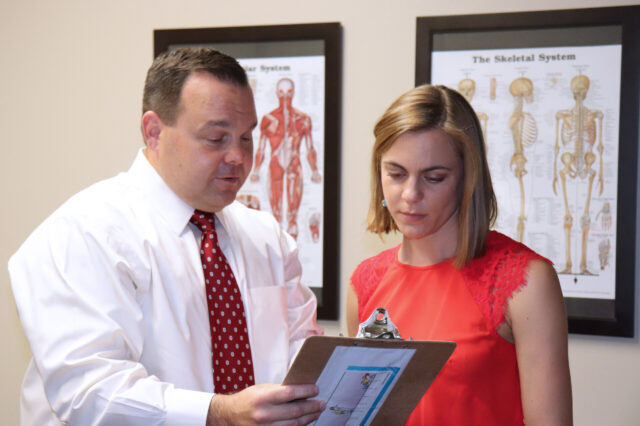UF researchers identify patient factors associated with persistent musculoskeletal pain

As health care providers and policymakers look for ways to address opioid misuse, knowing who may be at risk for developing chronic pain could be an important tool for prevention.
A new University of Florida study has pinpointed patient characteristics associated with long-term musculoskeletal pain. Researchers say the information could help physical therapists and other clinicians identify at-risk patients and better tailor treatments to control their pain and potentially limit prescription of opioid medications for pain.
The UF scientists found that patients who had greater initial pain, a higher number of other health problems, additional symptoms from other body systems and more pain-related psychological distress were more likely to continue to have pain one year after treatment. The findings appear today in the journal Physical Therapy.
“Musculoskeletal pain is very common and one of the leading causes of disability,” said Jason Beneciuk, Ph.D., D.P.T., M.P.H., a research assistant professor in the department of physical therapy in the UF College of Public Health and Health Professions, part of UF Health. “Being able to predict who will develop long-standing musculoskeletal pain will allow for better use of nonpharmacological treatment options, such as physical therapy.”
The UF study was designed to test the capability of a variety of screening tools for predicting persistent pain. The study included more than 400 patients receiving physical therapy for low back, neck, knee or shoulder pain at nine health care centers across the country.
Assessments included a measure of pain intensity, a history of previous medical diagnoses and two newly developed screening tools created by a UF pain research team. One asked patients to report symptoms they were experiencing in other systems of the body, including cardiovascular, gastrointestinal, endocrine, nervous, pulmonary and musculoskeletal. The second tool screened for pain-related psychological issues, including depressive symptoms, fear, anxiety and pain catastrophizing, which is characterized by beliefs that pain will worsen or nothing can be done to stop it. They also screened for positive emotions, such as self-efficacy and pain acceptance.
Patients completed the screening tools before treatment and four weeks, six months and one year later. The number of physical therapy treatments patients received varied, but averaged eight to 10 sessions over four to six weeks. Treatment was not standardized across patients.
At the one-year mark, 36 percent of patients were still experiencing persistent musculoskeletal pain. These patients had higher levels of pain at baseline, a greater number of other health problems and more pain-related psychological distress. The long-term pain predictors were the same across patients being treated for low back, neck, knee and shoulder pain.
“Our next step is to determine how these screening tools can be used to help clinicians determine initial treatment pathways,” said Beneciuk, the interim director of the Brooks-PHHP Research Collaboration at Brooks Rehabilitation.
Although it is too early in the research to offer treatment recommendations for high-risk patients, future recommendations could potentially include increased monitoring, structuring treatment to take into account multiple health conditions or teaching patients pain coping skills, Beneciuk said.
“In the United States, we are embarking on an era in health care where nonpharmacological alternatives are being recommended as the primary treatment options for common musculoskeletal pain conditions,” he said. “This is a real opportunity for physical therapy and other nonpharmacological treatments to help prevent patients from transitioning to chronic pain.”
In addition to Beneciuk, the study team included Trevor Lentz, Ph.D., P.T., M.P.H., a graduate of the UF rehabilitation science Ph.D. program and a postdoctoral research fellow at the Duke Clinical Research Institute; Ying He, Ph.D., a graduate of the UF biostatistics Ph.D. program and an assistant professor at Clarkson University; Samuel Wu, Ph.D., a professor in the UF department of biostatistics; and Steven George, Ph.D., P.T., a professor in the Duke Clinical Research Institute and the department of orthopaedic surgery at Duke University. Funding was provided by the Orthopaedic Section of the American Physical Therapy Association, the Foundation for Physical Therapy and the National Institutes of Health.
About the author
